25 Traditional Foods of Nepal
Nepal is a country that offers a truly enchanting experience for travelers. From its awe-inspiring landscapes to its rich cultural heritage, this mystical land has something to offer everyone.
However, when it comes to food, it has rarely been explored outside the usual dal-bhat and momos. In a country with 125 ethnic groups, there is bound to be an abundance of traditional foods that originate from the local spices and ingredients. Most of these dishes might even be at risk of vanishing. Food can tell a lot about its community and its lifestyle, the way a community lives, celebrates, and feasts.
THAKALI FOODS
Kanchemba
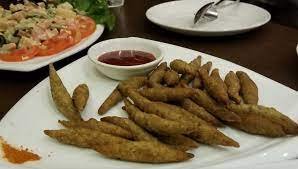
This dish is a fried snack made from buckwheat flour and served with spicy sauce and seasoned timmur powder. It is prepared by mixing buckwheat flour with boiling water, turning it into dough and deep frying it in ghee after shaping it. Kanchemba is crispy on the outside and chewy on the inside with a mild flavor. It goes well with spicy timmur paste or powder.
Phaparko Roti
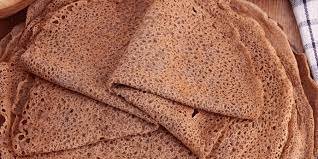
Also known as Ghoken in the local language, it is a buckwheat pancake made simply by mixing water and buckwheat flour. Buckwheat is commonly used in the Thakali community as it grows easily in the low-fertility soil of the highlands. Phaparko roti is popular not only in the Thakali community but also in other parts of Nepal as a popular and easy to-make dish.
Alangkhu
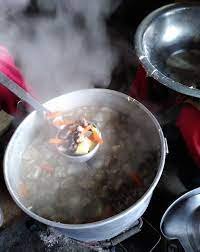
Also made from buckwheat flour, alangkhu is prepared as a noodle soup with smoke dried goat meat (sukuti) and vegetables. The preserved meat gives this dish a smoky and meaty flavor. It is a very nutritious dish and it warms up the body in the cold Himalayan regions.
Lepukhu
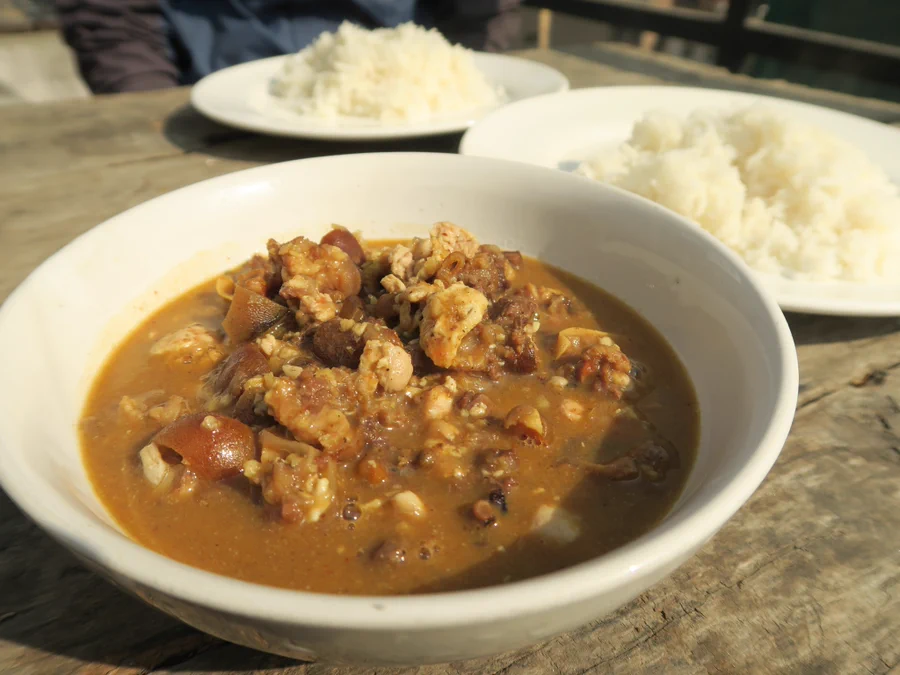
In the olden days, meat was rarely consumed and was eaten as a special dish during festivals or celebrations. As such, no part of the meat is wasted. Lepukhu is a spicy and sour goat head soup prepared during the Toran La festival of the Thakali community. The brain and other parts of the goat’s head are mashed up into the soup to give it a thick and gooey texture.
NEWARI FOODS
Chatamari
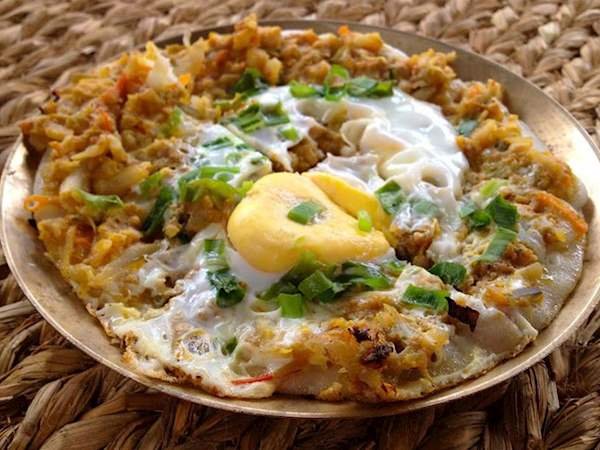
Chatamari is made from rice flour batter which is spread on a pan similar to a crepe. A bit crunchy when fresh out of the pan, as it cools, it gets chewier. This dish is a specialty of Newars of the Kathmandu Valley and it can be eaten plain or with a topping of an egg or minced meat.
Kwanti
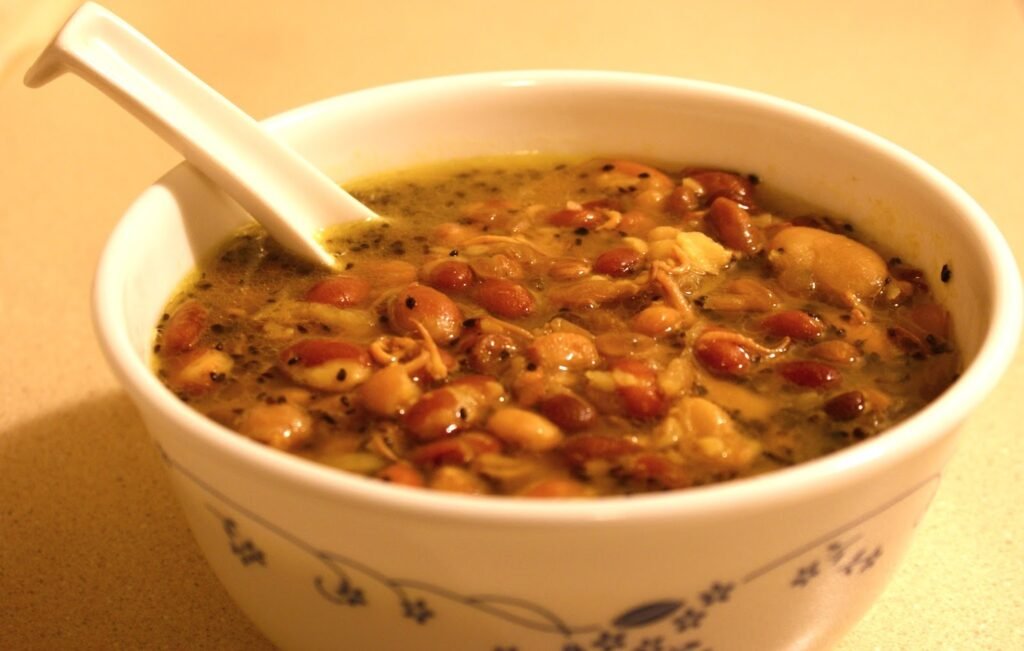
Kwanti is a type of soup made with nine types of beans. This soup is consumed during the Janai Purnima festival, also known as ‘Guhna Punhi’ in the Newa community as well as during winter. This soup is revered for its nutritious properties and the beans are said to improve the immune system during monsoon.
Chhoela
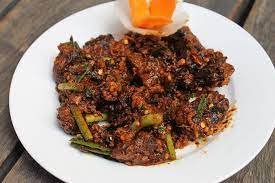
A popular meat dish made with buffalo meat, chhoela is a combination of two words – chhwey which means to cook by searing and la which means meat. Thus, chhoela translates to meat which has been seared. Chhoela is usually eaten as a spicy side dish along with beaten rice, and other side dishes. A juicy and savory meat dish, no doubt, it is a crowd favorite.
RAI FOODS
Lung ghak cha
Similar to the Tamales of Mesoamerica, lung ghak cha is made from maize. Where it diverts from the Latin-American dish is that while tamales are made from cooked corn dough, lung khak cha is made from unripe maize. It takes the unripe maize and turns it into a paste, wrapped in corn husk, and steamed. Lung ghak kha translates to a round stone-shaped snack.
Yangben Faksa
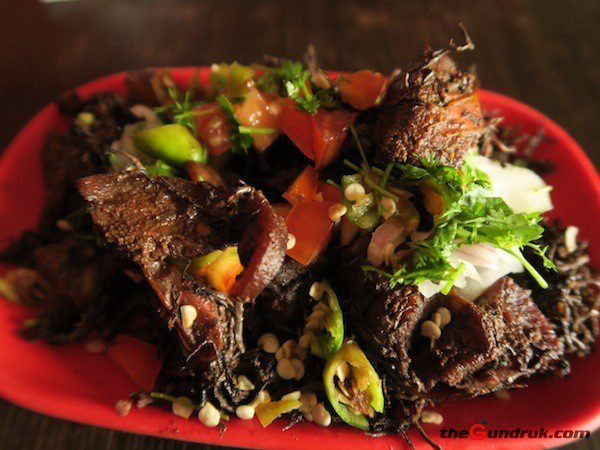
A pork curry dish is popular in the Rai and Limbu communities, it is cooked with pork, pig’s blood, and yangben, a wild edible lichen. This dish has a unique earthy flavor which is unlike other dishes in Nepal. Yangben was commonly found in the village areas near forests, however, it has become less common as more forest areas are being cut down for roads and other infrastructures.
Kinema
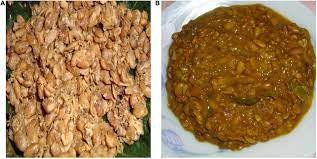
Fermented soybeans with a slightly pungent smell and sticky texture, Kinema is a popular delicacy in the Kirati communities of Nepal. It has a slightly fermented taste and can be eaten with steamed rice or used as the star ingredient in curries or soup.
SHERPA FOODS
Rikikur
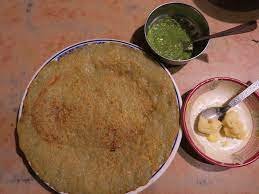
In Sherpa language, ‘riki’ means potato and ‘kur’ means bread/roti. So, rikikur means potato bread, or more specifically, potato pancake. Potatoes are grated finely and mixed with buckwheat flour to make a batter which is cooked with nak (female yak) butter. It is often served with a spicy sauce made from sour yogurt, chillies and spring onions.
Rildok
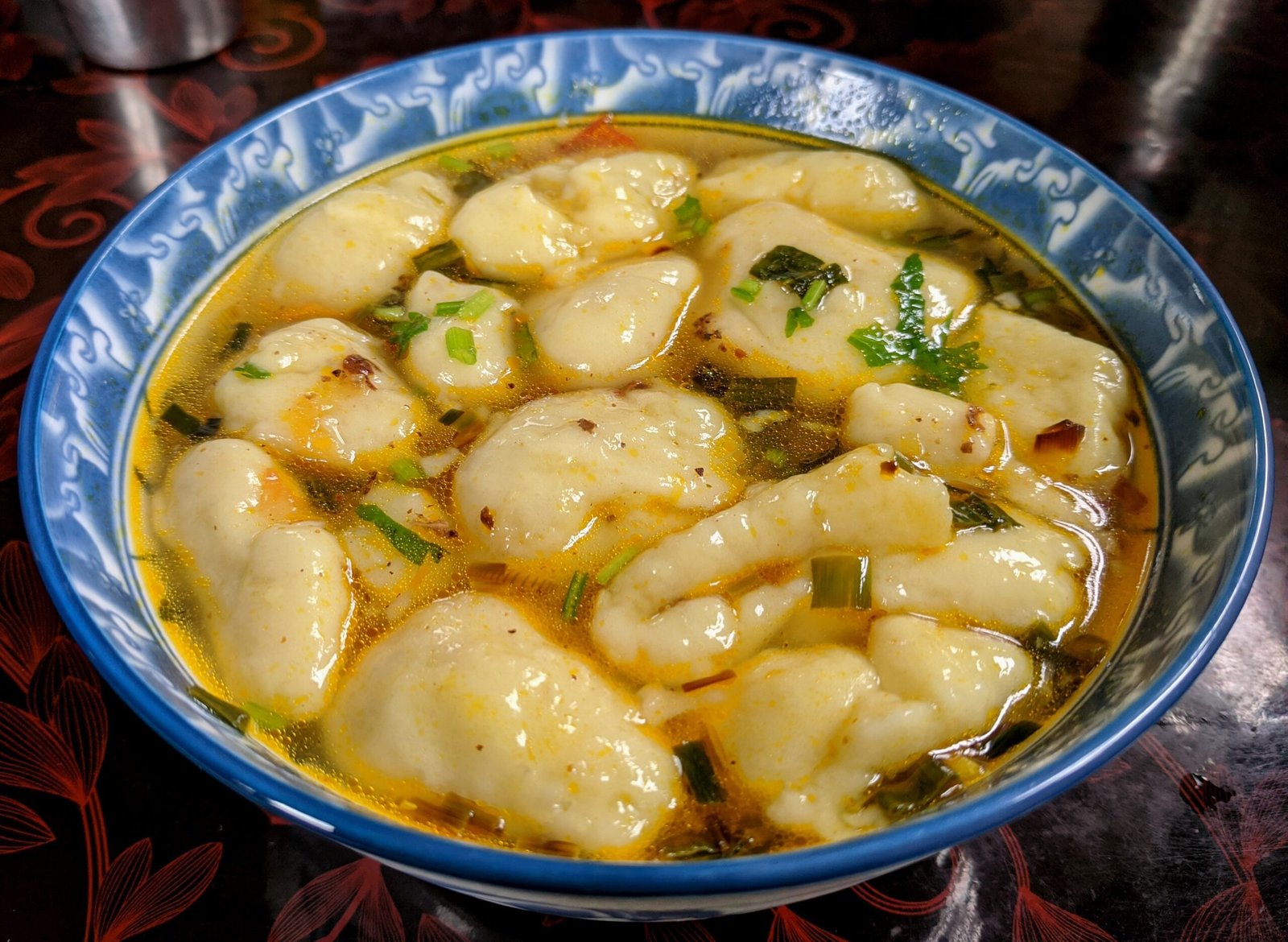
Rildok are potato dumpling soups. The dumplings are made by pounding boiled potatoes on a wooden mortar and pestle until they become a soft and stretchy lump. The soup is made from spring onions, Sichuan pepper, and chilly powder. The dumplings are soft and melt in the mouth while the soup is light and refreshing.
Shyakpa
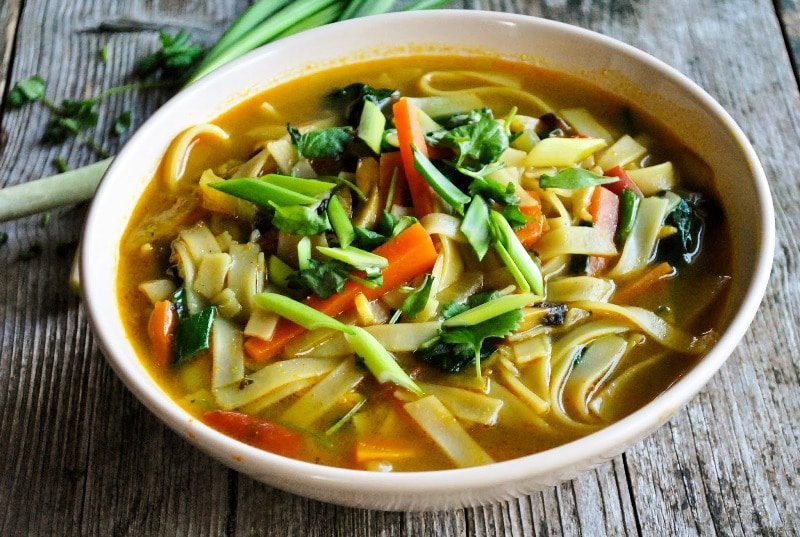
This comforting hand-pulled noodle soup consists of freshly made noodles, dried meat, vegetables and spices. It is warm and nourishing and is a great dish to eat during the cold winters of the Himalayas. Shyakpa is also known as Thenthuk. While shyak-pa means meat stew, then-thuk means pulled noodles.
Khapse
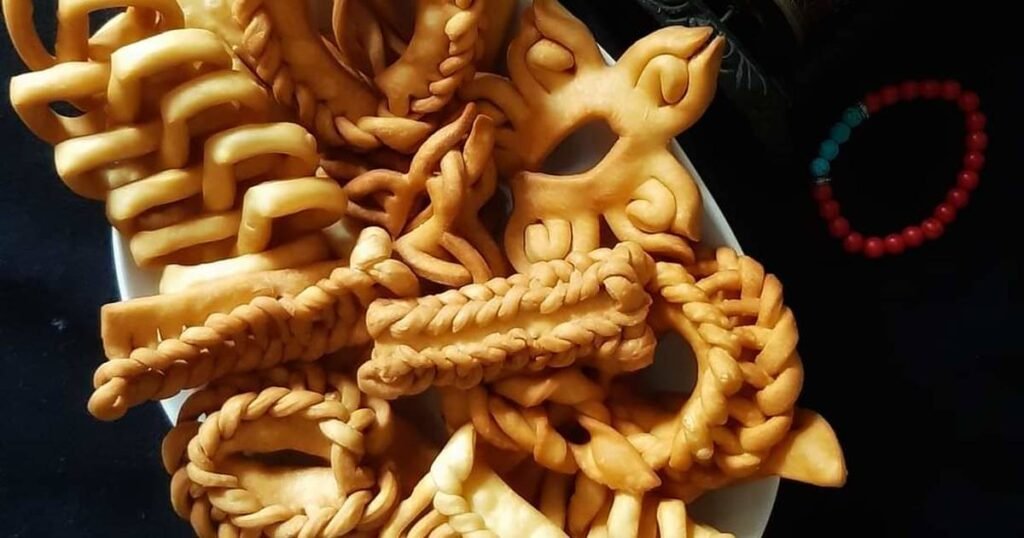
Khapse is a sweet, deep-fried pastry that is prepared in huge quantities during Lhosar. On other days, it is generally eaten as a snack with milk tea. It is made from wheat flour, butter, sugar, and milk. You can find it being sold around Sherpa and Tibetan settlements such as Boudha.
THARU, MAITHILI, RAJBANSI FOODS
Katnausi

A dish prepared from local pig with blood and spices, katnausi is eaten during the Maghi festival, the beginning of the month of Magh in the Nepali calendar. As it is forbidden to kill any animals during Maghi, the pig is killed beforehand. It is a prized delicacy especially enjoyed by those involved in butchering the pig.
Ghonghi
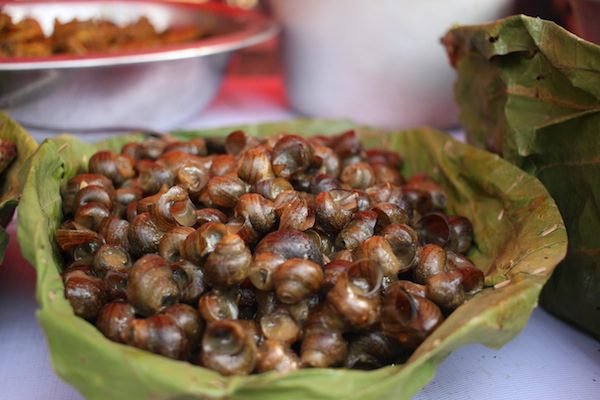
Freshwater snails found in rivers, ponds, and rice fields are a popular favorite delicacy in the Tharu and Maithili communities. The ghonghi is prepared as a curry along with flaxseed which adds a nutty flavor to the dish. Ghonghi is rich in protein and it is believed that it provides immunity against malaria in the hot terai regions.
Machh ko Jhor
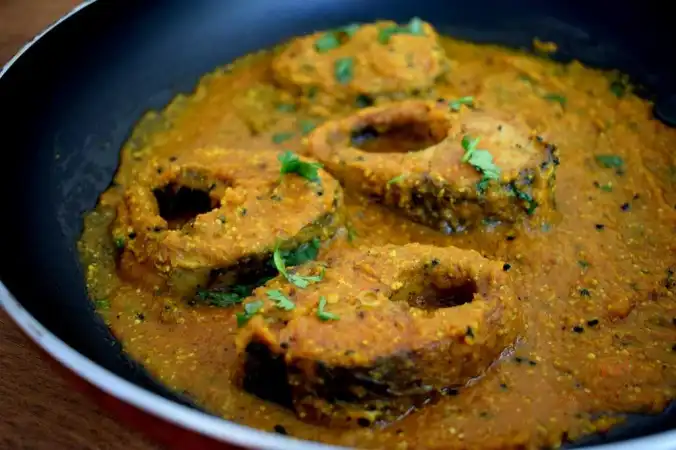
Literally translating to ‘fish curry’, machhka jhor is made with Rohu fish which is found abundant in the rivers of Southeast asia. It is prepared typically with mustard paste and spices.
Arikanchan
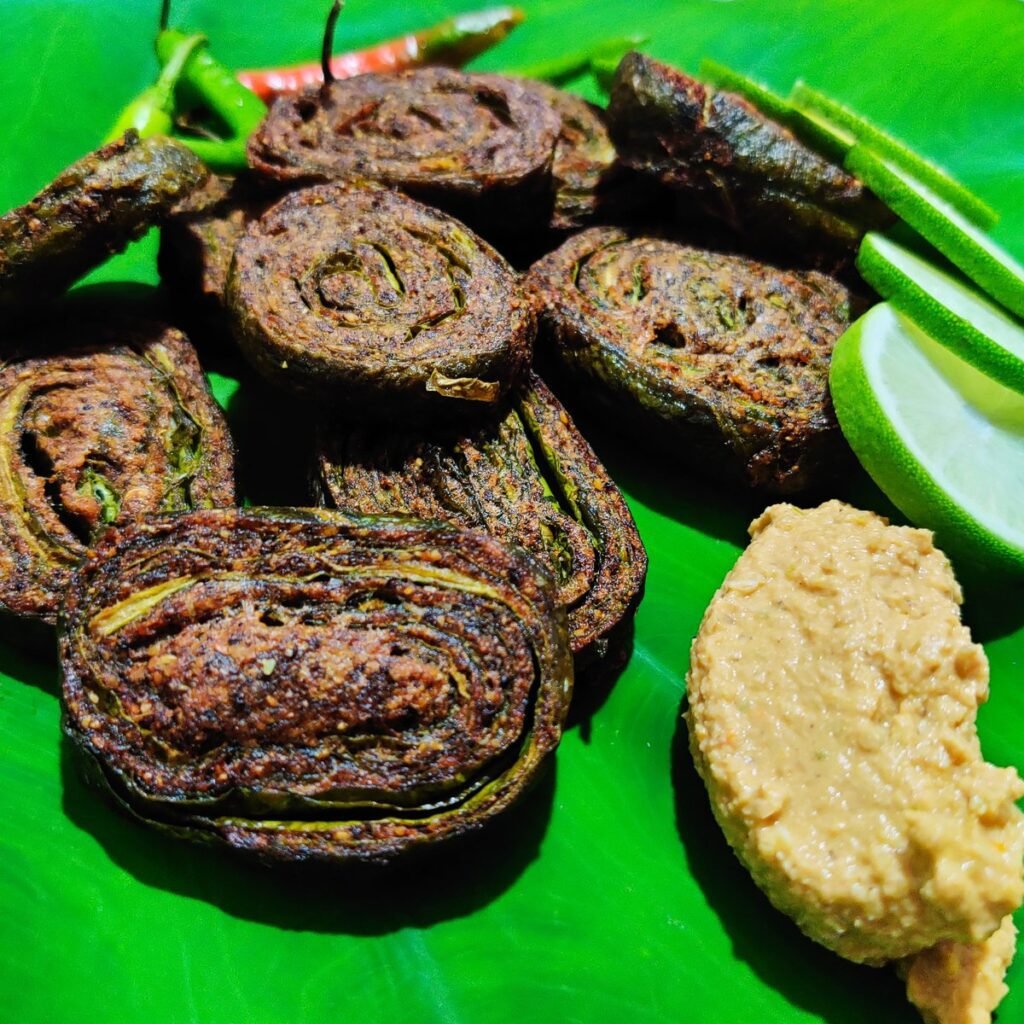
This traditional dish is made with taro leaves and black lentils. The black lentils are turned into a paste, seasoned with spices and then wrapped in taro leaves similar to sushi. It is then steamed, cut into slices and deep fried, and then mixed into curries. A healthy and nutritious dish, arikanchan is enjoyed when taro leaves are in season.
Bhakka
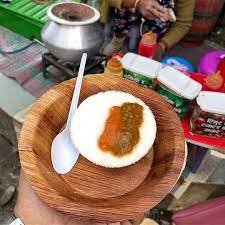
Bhakka is a popular winter street food of Eastern Terai. A traditional delicacy of Rajbansi community of Eastern Terai of Nepal, Bhakka is made with steamed rice flour and usually served with spicy tomato and coriander pickle.
KHAS (FAR WEST) FOODS
Kagunoko Khir
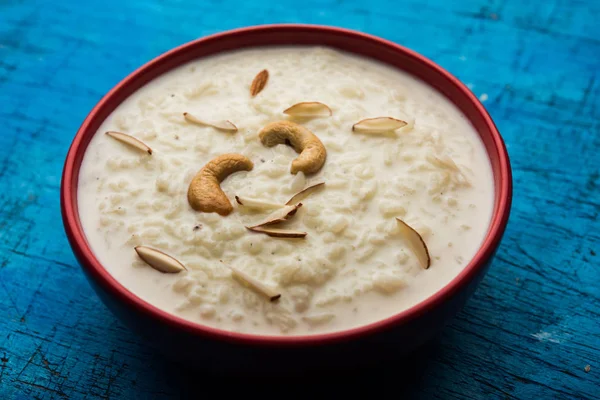
This is a sweet dish made from foxtail millet cooked with milk, honey and cardamom. The cooking process is similar to kheer, rice pudding that is popular in the Indian sub-continent. A rich, creamy and comforting dessert, the cardamom adds a refreshing touch.
Khas
Khas are sweets made from roasted rice which is ground into flour mixed with jaggery, cardamom and ghee. It is an essential part of wedding ceremonies of the Khas community— Brahmin, Chhetri and Dalit. Before the wedding, a day is assigned when the family of the bride comes together to prepare the sweets.
Kancho Mewako Achar
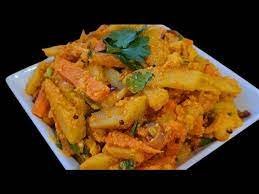
This refreshing dish is made from unripe papaya which is grated and mixed with spices. It is commonly prepared during the festive season of Dashain and is eaten with rice. It can also be eaten with a dipping sauce made from chuk.
MID-WEST FOODS
Chukauni
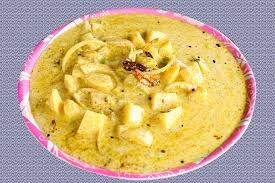
Made with boiled potatoes, sour yogurt, and spices, this refreshing salad is known for its sourness. Chukauni originates from the word ‘chuk’ which means concentrated lemon juice. It is said to have originated from the hilly regions of Palpa and traveled to the neighboring regions. Chukauni is best complemented with batuk, deep-fried black lentil fritters.
Gundruk and Sinki
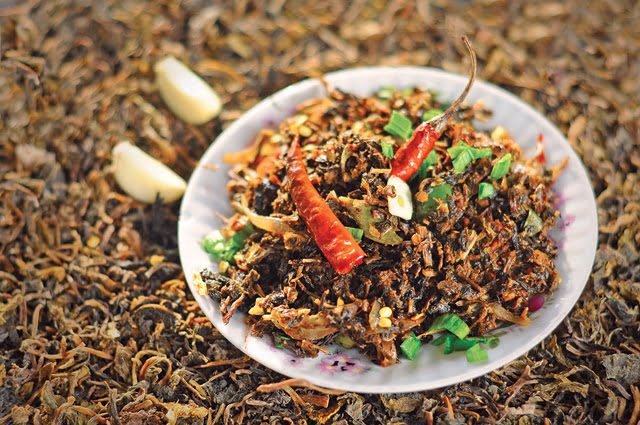
Gundruk and sinki are both similar in terms of the fermentation process. While gundruk is the process of fermenting leafy vegetables, sinki is made from radish. Fermentation allows the food to stay fresh for a long time. Sinki can be prepared as a soup by first soaking it in water then cooking it with onions, tomatoes, chillies and other vegetables.


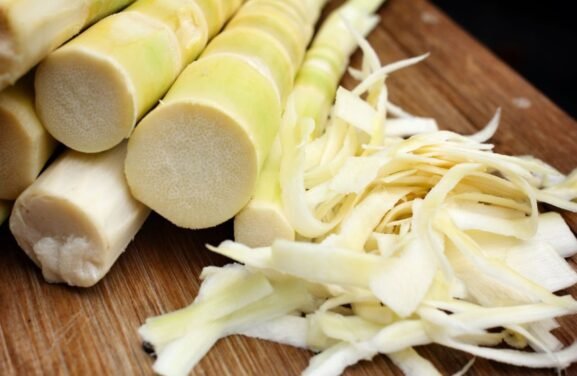
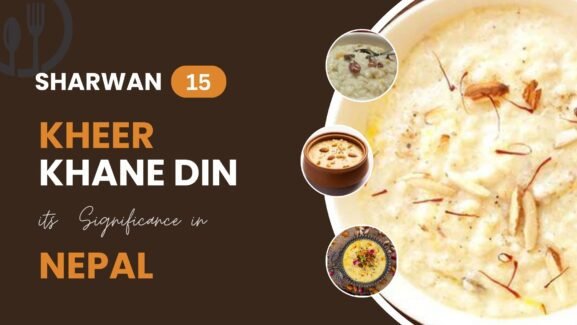
Century Foods
March 13, 2024 at 11:51 amThank you, I like this recipe & look forward to using it!